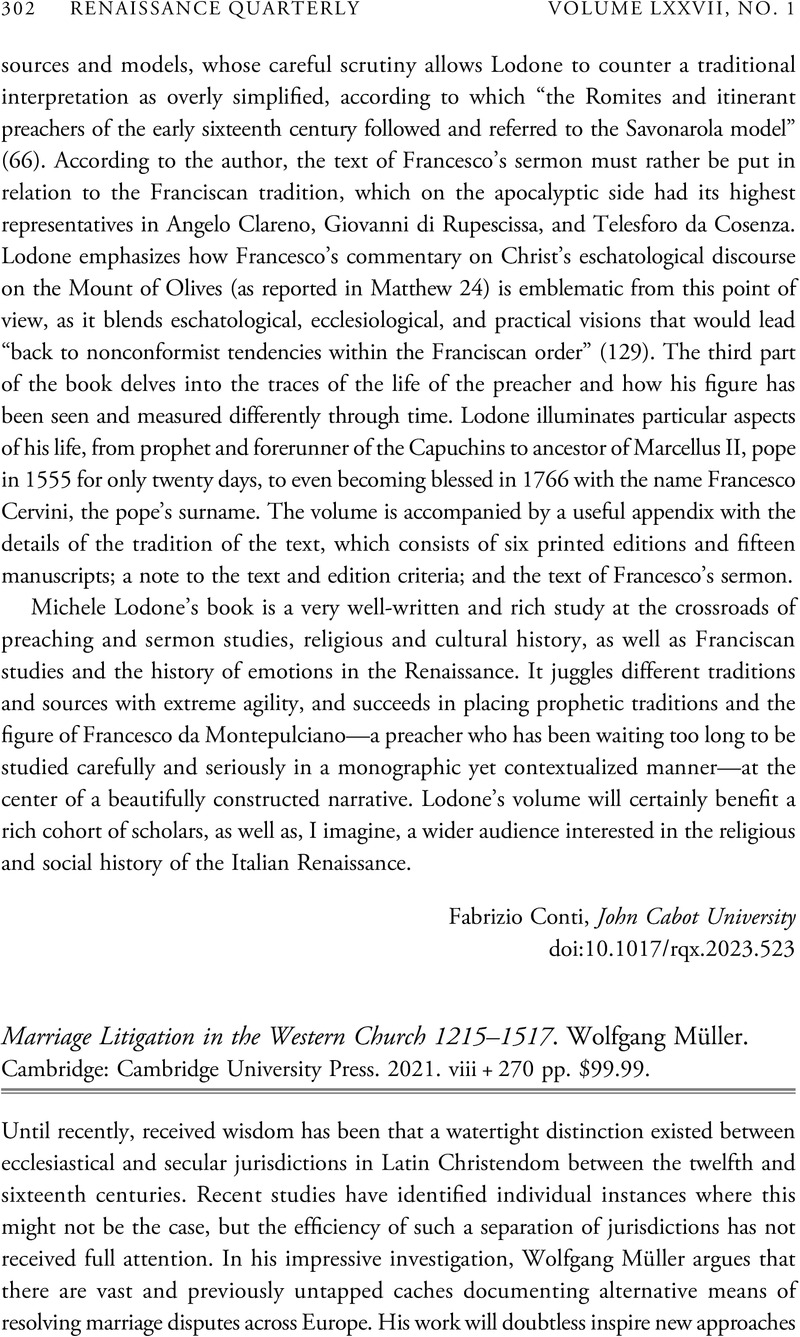No CrossRef data available.
Article contents
Marriage Litigation in the Western Church 1215–1517. Wolfgang Müller. Cambridge: Cambridge University Press. 2021. viii + 270 pp. $99.99.
Review products
Marriage Litigation in the Western Church 1215–1517. Wolfgang Müller. Cambridge: Cambridge University Press. 2021. viii + 270 pp. $99.99.
Published online by Cambridge University Press: 24 April 2024
Abstract
An abstract is not available for this content so a preview has been provided. Please use the Get access link above for information on how to access this content.

- Type
- Review
- Information
- Copyright
- Copyright © The Author(s), 2024. Published by Cambridge University Press on behalf of The Renaissance Society of America



